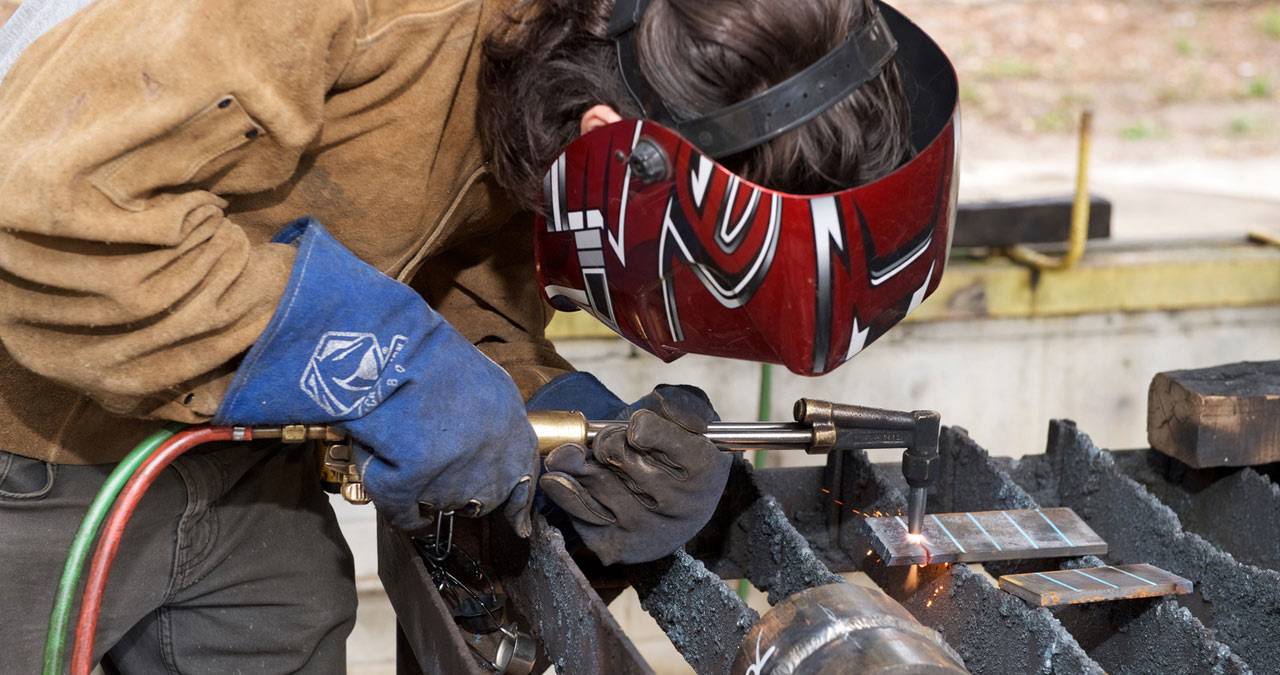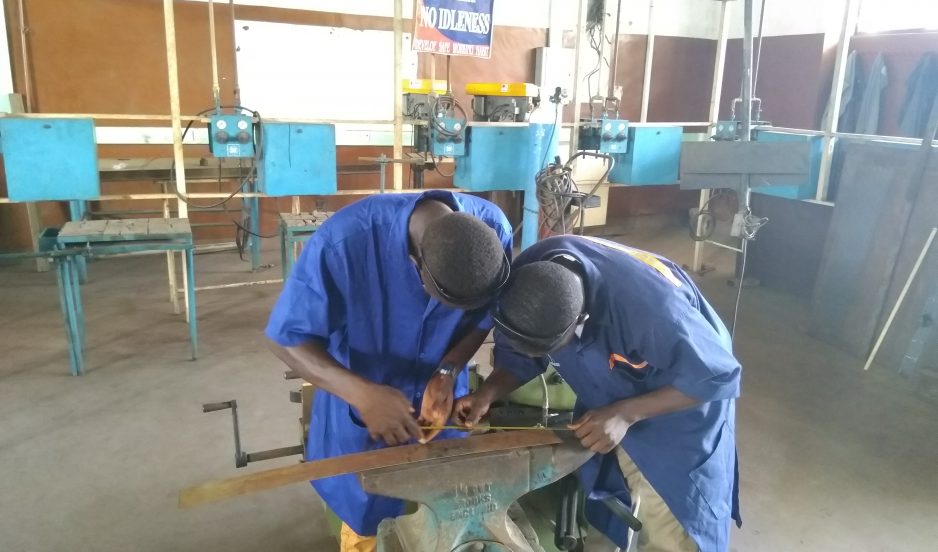Usual Welding Repair Service Issues and How to Address Them Properly
Welding repairs usually encounter a series of concerns that can threaten the integrity of the end product. Typical troubles consist of poor infiltration, porosity, and imbalance, amongst others. Each problem offers special obstacles that need particular methods for resolution. Understanding these concerns is vital for welders intending to improve their results and abilities. This conversation will certainly discover these typical welding fixing problems and reliable methods to address them.
Inadequate Penetration
Inadequate infiltration happens when the weld steel stops working to fully fuse with the base material, resulting in weak joints and potential structural failures. This concern frequently stems from not enough warmth input, wrong electrode angle, or inappropriate welding speed. Welders may run into poor penetration as a result of a mistake of the essential specifications for a specific material density or type. Furthermore, contamination on the base material's surface area can hinder effective bonding, aggravating the trouble. To deal with poor infiltration, welders must guarantee ideal settings on their equipment and maintain a tidy job surface. Normal examination of welds is suggested to determine any type of shortages early, enabling timely corrections and the prevention of jeopardized structural stability in welded settings up.
Porosity
Porosity is a typical issue in welded joints that manifests as small gas bubbles entraped within the weld steel. This issue can endanger the honesty of the weld, leading to reduced strength and possible failure under tension. Belgrade Welding. Porosity normally arises from contamination, dampness, or inappropriate welding techniques, which enable gases to escape into the liquified weld swimming pool. To resolve porosity, welders must assure proper surface prep work, keep a clean workplace, and utilize appropriate welding parameters. Furthermore, choosing the ideal filler material and securing gas can minimize gas entrapment. Regular assessment and screening of welds can help identify porosity early, assuring timely corrective activities are taken, consequently preserving the quality and reliability of the bonded structure
Misalignment
Imbalance in welding can emerge from different aspects, consisting of inappropriate configuration and thermal growth. Comprehending the origin is crucial for efficient resolution. A number of correction techniques are readily available to realign components and assure architectural stability.
Reasons of Misalignment
Welding misalignment commonly originates from a variety of underlying concerns that can endanger structural integrity. One key reason is inappropriate fit-up of parts before welding, which can cause gaps and irregular surface areas. Variations in thermal growth throughout the welding procedure can also cause distortion, especially if the materials being joined have different coefficients of growth. In addition, poor securing and fixturing may fall short to hold components firmly in place, resulting in motion during welding. Inadequately maintained equipment, including welding machines and devices, might present disparities in the weld bead, more adding to misalignment. Finally, operator error, stemming from inadequate training or experience, can likewise play a substantial function in developing misaligned welds.
Correction Methods Available
Dealing with imbalance efficiently requires a mix of rehabilitative strategies tailored to the details problems available. One typical technique is the use of components or jigs to hold parts in the correct placement during welding, making certain consistent positioning. Additionally, preheating the products can help in reducing distortion and enhance fit-up. For considerable imbalance, mechanical adjustment strategies, such as making use of hydraulic jacks or clamps, can be used to deal with the placement before welding. Post-weld warm treatment may additionally be necessary to alleviate anxieties triggered by misalignment. Ultimately, careful evaluation and adjustment during the setup stage can protect against misalignment concerns from coming to be considerable troubles, promoting a smoother welding process and improving overall architectural integrity.
Distortion
Distortion is an usual difficulty in welding that can arise from numerous variables, consisting of uneven cooling and heating. Comprehending the reasons of distortion is necessary for implementing effective avoidance methods. Resolving this concern not only enhances architectural honesty however likewise boosts the total high quality of the weld.
Sources of Distortion
When subjected to the intense warmth of welding, products typically undertake modifications that can result in distortion. This sensation largely occurs from thermal development and contraction throughout the welding process. As the weld area warms up, the material increases; upon air conditioning, it contracts, which can create internal tensions. Additionally, unequal heating across a work surface can intensify these tensions, causing bending or bending. The sort of material additionally plays a considerable duty; steels with varying thermal conductivity and coefficients of expansion may respond in a different way, leading to uncertain distortions. Furthermore, bad joint style and insufficient fixturing can add to imbalance throughout welding, raising the likelihood of distortion. Recognizing these reasons is necessary for reliable welding repair and prevention methods.
Avoidance Techniques
Reliable avoidance methods for distortion throughout welding concentrate on regulating warmth input and guaranteeing appropriate joint style. Maintaining a constant warm input assists to lessen thermal expansion and tightening, which can bring about distortion. Making use of techniques such as preheating the work surface can additionally lower the temperature gradient, promoting consistent heating. Furthermore, selecting ideal joint styles, such as T-joints or lap joints, can boost security and reduce stress focus. Applying proper fixturing to secure the workpieces in place further aids in keeping alignment during the welding procedure. Ultimately, staggered welding series can disperse warmth much more evenly, avoiding local distortion. By applying these approaches, welders can greatly lower the probability of distortion and boost the total quality of their welds.
Fracturing
Cracking is a typical problem come across in welding repair work, commonly resulting from numerous variables such as inappropriate cooling prices, material selection, or poor joint preparation. The occurrence of fractures can substantially compromise the honesty of the weld, leading to possible failures throughout procedure. To address this problem, welders must initially evaluate the origin, guaranteeing that products are suitable and appropriately picked for the specific application. Furthermore, regulating the cooling rate throughout the welding process is vital; rapid cooling can induce stress and anxiety and result in breaking. Appropriate joint layout and preparation additionally add to minimizing the danger. Executing these approaches can improve weld high quality and navigate here toughness, inevitably decreasing the probability of breaking in ended up weldments.

Insufficient Combination
A significant concern in welding repair services is insufficient blend, which happens when the weld metal does not appropriately bond with the base product or previous weld passes - Montana Mobile Welding and Repair. This issue can cause weak points in the joint, possibly jeopardizing the honesty of the bonded framework. Factors adding to insufficient combination include not enough warm input, improper welding strategy, and contamination of the surfaces being joined. To address this concern properly, welders should assure correct pre-weld cleansing and surface area prep work, in addition to change their welding specifications to attain sufficient infiltration and combination. Regular assessment throughout the welding process can likewise assist identify insufficient blend early, permitting timely restorative procedures to enhance the general top quality of the weld
Overheating
While welding repairs can boost architectural integrity, overheating provides a substantial obstacle that can result in material destruction. Extreme warm throughout welding can modify the mechanical homes of metals, resulting in decreased strength, raised brittleness, and bending. This sensation is particularly critical in high-stress applications where architectural integrity is extremely important. Identifying getting too hot can include aesthetic examinations for staining or distortion, as well as monitoring temperature level during the welding procedure. To minimize the risks associated with getting too hot, welders ought to employ ideal methods, such as controlling warm input, adjusting traveling rate, and using ideal filler products. Furthermore, applying pre- and post-weld heat treatments can help restore product buildings and improve the overall quality of the repair service, making sure long-lasting performance and security.
Regularly Asked Inquiries
What Are the Usual Indicators of a Welding Problem?

How Can I Test My Welds for Top quality?
To evaluate welds for high quality, one can use visual assessments, ultrasonic screening, and radiographic techniques. Each strategy ensures structural integrity, determines issues, and validates adherence to defined requirements, ultimately boosting the integrity of the bonded joints.
What Security Safety Measures Should I Take While Welding?
When welding, one ought to focus on safety and security by using suitable individual safety equipment, guaranteeing appropriate ventilation, protecting flammable products away, keeping a clean work area, and being conscious of surroundings to avoid crashes and injuries.
Can I Fix a Weld Without Remodeling the Entire Joint?
Fixing a weld without remodeling the whole joint is possible, relying on the welding iron damages (Montana Mobile Welding and Repair Fabrication). Techniques such as grinding, including filler product, or using a welding procedure can efficiently deal with details defects welding stainless steel to mild steel while maintaining the surrounding framework
What Devices Are Crucial for Effective Welding Repairs?
Necessary devices for efficient welding fixings include a welding equipment, wire brush, mill, protective gear, clamps, and filler materials. Each tool plays a vital function in guaranteeing top quality and safety during the fixing process. Porosity commonly occurs from contamination, wetness, or inappropriate welding strategies, which permit gases to run away right into the molten weld pool. Inadequately kept tools, consisting of welding machines and tools, may present disparities in the weld bead, further adding to imbalance. When subjected to the intense warmth of welding, materials typically undergo changes that can lead to distortion. Breaking is a typical concern encountered in welding repair work, often resulting from various variables such as improper cooling rates, material selection, or poor joint preparation. A substantial issue in welding repairs is insufficient blend, which happens when the weld metal does not properly bond with the base material or previous weld passes.